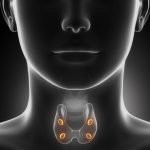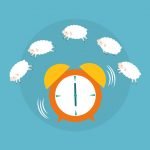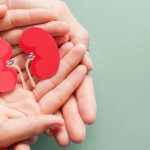Eating Disorders: Recognizing the Signs in Preteens & Teens
LISA GHENT, ND
A lot has changed since I was a kid. The rapid development of technology has introduced smart phones, gaming systems, and tablets, all of which seem to be ubiquitous, and kids are getting hooked on electronics younger and younger. With smart phones has come social media. The fact is that we interact with the world and each other very differently than we did 25 years ago. While there was and still is pressure from peers to fit in, social media provides constant input to kids about how they should look. It doesn’t matter that the staged and filtered images we see online aren’t realistic; teenagers now measure themselves against these unrealistic expectations, even when they know they aren’t real. This has led to an increased incidence of eating disorders worldwide.1
Eating Disorders: Considerations
It is estimated that up to 1 million Canadians (currently) and 30 million Americans (lifetime) have an eating disorder,2,3 with proportionately more girls being affected than boys.1 The incidence of eating disorders in kids is estimated to be 2-4 times higher than that of type 2 diabetes.4 Up to 30% of girls between the ages of 10 and 14 have reported dieting to lose weight.5-8 Girls as young as 8 years old are being diagnosed with eating disorders.9
The prevalence of disordered eating – less severe and more subtle than an eating disorder – is far higher than that of full-blown eating disorders, which is a good thing. If we can identify and counsel patients with disordered eating appropriately, we can prevent them from engaging in dangerous behaviors and escalating to a more serious mental illness.
This is an epidemic. Given the time naturopathic doctors are afforded with patients, screening for disordered eating and eating disorders should be done with most patients. This is especially important, considering that few people with eating disorders seek treatment.10 In my practice, I start looking for signs in girls from 10 years old, and boys from 14 years old, at the latest.
There are 3 main factors to consider when evaluating a patient for disordered eating versus an eating disorder: behaviors, obsession, and functionality.11,12
- Behaviors can include any number of things involving food or exercise (eg, purposefully restricting calories, over-exercising, purging). Such behaviors will occur often, such as daily or several times a week. This can sometimes be a tricky piece to figure out, especially in teens, because they typically try to hide their risky behaviors. They also may believe that they know what is best for them, and they won’t be able to see the long-term consequences of their behavior. Younger kids may try to hide it because they feel it might make their parents mad. Engaging in multiple behaviors is common.
- Obsessing over food is typical in eating disorders. This can become all-consuming, and can be disruptive to everyday activities, including school. With disordered eating, there is an unhealthy relationship with food, and the patient may have a pattern of pathological dieting or emotional eating. The distress associated with having foods that aren’t “part of the program” is significantly less among those with disordered eating compared to those with eating disorders. Patients with eating disorders will shame themselves when they eat in a way that they consider bad.
- The level of functionality is the most important distinguishing factor for eating disorders. Examples of how functionality can be impacted include avoidance of eating with the family or others, so that certain behaviors can be maintained, or an inability to go to school because of the need to exercise. Typically, those with disordered eating can continue with their regular life, and it may not seem to anyone that something is wrong. It’s common for eating disorders to start as disordered eating, but this doesn’t mean that everyone with disordered eating will end up with an eating disorder.
Types of Eating Disorders
Eating disorders are serious mental conditions with serious consequences, and are classified in the DSM V.13 Here are their definitions:
- Anorexia Nervosa (AN): Patients with AN have an extreme fear of gaining weight. They are obsessed with being thin, and to achieve this they eat very little (or not at all), even when hungry. They have a distorted body image.
- Bulimia Nervosa (BN): This is more common than AN. Patients with BN will attempt to control their diet by binging and purging. They will feel of being out of control when binging, and then experience guilt that forces them to over-exercise and/or purge (vomiting, laxatives, diuretics). For the diagnosis, binging and purging occurs at least once a week for 3 months. There is a fear of gaining weight.
- Binge Eating Disorder: This is the most common eating disorder in all age groups. Patients with binge eating disorder will binge and feel out of control while doing so, but they do not purge. There is significant distress associated with binging. For the diagnosis, these episodes happen at least once a week for 3 months.
- Avoidant/Restrictive Food Intake Disorder (ARFID): Patients with ARFID will avoid foods based on their characteristics, and they believe there will be negative consequences if they eat them. There is significant weight loss and nutritional deficiencies.
- Other Specified Feeding or Eating Disorder: These patients do not meet the full criteria of the other listed eating disorders; however, there are behaviors present that cause distress in social, scholastic, or other important areas of functioning.
It’s exceedingly important to recognize and address disordered eating as early as possible because of the high mortality and morbidity rate associated with eating disorders. For example, AN has the highest overall mortality rate of any mental illness (up to 15% of those with AN).14 In Canada, between 1000 and 1500 deaths are due to AN and BN, though the number is likely higher because eating disorders aren’t always listed on the death certificate. Approximately 26% of people with eating disorders will attempt suicide.15 As primary-care clinicians, we need to know and understand the potentially debilitating long-term effects of eating disorders.
Clinical Consequences
According to the National Eating Disorders Association, common consequences of eating disorders include problems in cardiovascular, gastrointestinal, neurological, and endocrine systems, as well as several miscellaneous abnormalities (see Table 1).16
Table 1. Consequences of Eating Disorders
| Cardiovascular Decreased blood pressure and heart rate Arrhythmia Heart failure | Endocrine Imbalances of sex hormones Thyroid dysregulation Amenorrhea Osteopenia, osteoporosis Insulin resistance Hypothermia Hypercholesterolemia |
| Gastrointestinal Gastroparesis Stomach pain, bloating Blood sugar fluctuations Intestinal obstruction, constipation Bacterial infections Ruptured esophagus or stomach Pancreatitis | Other Dry skin Brittle hair and nails Lanugo growth Kidney failure Leukopenia Anemia Compromised immune status Anxiety, depression, suicide |
| Neurological Difficulty concentrating Insomnia Numbness of the extremities Fainting, dizziness Sleep apnea |
Signs of Disordered Eating
The first indications that you should investigate disordered eating in a child will be on the intake form. Any irregularity involving food behaviors, weight loss, sudden changes in exercise habits, and/or sudden social changes should inspire a deeper dive. Here are some examples from my own practice:
- A parent has noticed that their child has been hoarding and hiding food. They have found hidden wrappers. The food they are hiding is junk food: candy, chocolate, chips.
- A parent expresses concerns about a child’s appearance, which could include their shape and/or weight. They make references to their child being different from their friends.
- A child has adopted a new or fad diet, regardless of the reason. One of the most common ones I hear is vegetarianism.
- A parent reports a change in the mood of their child. It could be anxiety, depression, irritability, or combativeness.
- A parent reports that their child has experienced recent weight loss or weight gain
- A parent reports a child becoming picky and disinterested in eating family meals
- A child had started menstruating, but now has stopped
Some clues you’ll get from observing patients when they come into the office. I am always assessing clothing, posture, eye contact, and body modifications (hair dye, piercings, tattoos, evidence of self-harm), as well as how they interact with the parent(s) and with me. It’s normal and common for any of these things to exist in the absence of an eating disorder; however, asking more questions is necessary to make this determination. This becomes trickier with teenagers because it’s harder to gain their trust, but this is essential if you want to get any honest information about potentially risky thoughts or behaviors.
My initial visits are 60 minutes long, and I like to spend 30-40 minutes of that time gathering information, getting to know kids, and creating a connection. It’s at this point, if I feel there might be more to uncover than they are likely to share with a parent present, I will ask if it’s OK that I talk with them on their own. If I have laid the groundwork, once the parent is gone I can ask more direct questions. For example, if I have heard that the patient has become vegetarian for the purpose of becoming healthier, I will probe this more specifically. My clinical experience has been that when children say they are changing the way they are eating, they are often doing so for the specific purpose of losing weight. I don’t assume that this is unhealthy, but I seek additional information. Another example might be asking about why they dye their hair. (Is it because they want to change how they look?)
Evaluate whether the patient has any risk factors. This includes participation in certain types of extra-curricular activities where being thin is considered advantageous (eg, dancing, modeling, competitive athletics); personality traits, including low self-esteem, difficulty managing big emotions, or being a perfectionist; or a family history of eating disorders (parent or sibling).17
While weight and height, as well as calculation of body mass index, should be assessed, one of the most important factors to keep in mind when assessing a child is that weight is just a symptom, and it’s often a trigger. Be cautious about how and when you weigh a child, especially a teenager, so that you can get the information you need without creating a trigger for concerning behavior. Remember that a child can have disordered eating, or even a diagnosable eating disorder, and not be underweight; there may or may not be weight loss. What you are really trying to uncover is the mindset and the behaviors, and then to assess how they are functioning in the world.
Workup
Assessment Questions
Below are some of the assessment questions that I might ask in my intakes. Some of these questions I will ask with the parent in the room, but many of them I ask without the parents present. The number of questions I ask and how deeply I probe depends on the degree of honesty I believe I’m hearing in the child’s answers, what I think is actually a concern (as opposed to normal and age-appropriate behaviors), and whether or not I feel there are other conditions or health concerns.
Gastrointestinal/Diet Section
- Is there a history and/or fear of stomach aches?
- Are there more than 3 bowel movements in a day?
- Is there an aversion to tastes or textures of certain or many foods?
- Are 3 meals per day being eaten?
- Make sure to ask the child if they discard breakfast and/or lunch once they are away from the home
- How large are portion sizes when the child chooses them on their own?
- How much of the food that is served is eaten?
- Are they a picky eater?
- Has there been any noticeable weight loss?
- Are wrappers or other empty food containers found hidden in the child’s room?
- Do ‘”treats” disappear at the house?
- Is there a large appetite with no apparent weight gain?
- Does the child want to eat alone or get into disagreements with parents at mealtime in order to avoid eating with them?
- Are they bringing home school lunches that are not fully eaten?
- Has a specific diet been adopted for “health reasons,” such as vegetarianism?
- How many ‘diets’ have they been on?
- Has there been an increased interest in cooking?
Mental/Emotional Section
- How is the child’s self-confidence?
- Are they a leader or a follower in their group of friends?
- Do they stand up for themselves or what they believe in?
- Can they be themselves around their friends?
- Do they feel good about their abilities, as compared to their friends?
- Do they like who they are overall?
- Do they believe they are a good person?
- Are there any worries about body image?
- Start by asking how they feel about their body – what they like and don’t like
- Notice if they are wearing baggy clothing, and ask if that’s the type of clothing they prefer and why
- Do they spend a lot of time in front of the mirror, and what are they thinking when they are doing that?
- Do they avoid mirrors, and if so, why?
- How often do they weigh themselves?
- Do others comment on their appearance?
- Does the way they think they look match how they want to look?
- Is there increased anxiety or depression?
- Have mood swings increased, or has there been a distinct change in overall mood?
- This can include anxiety, depression, indifference, combativeness, irritability, anger, obsessions, or compulsions
- Are they socially isolating themselves?
- Eg, the parents might have noticed they aren’t hanging out with their usual friends or any friends at all, and spending a lot of time in their room
Other Questions
- Is there any thinning of the hair? (In a girl, this may be apparent as a less full ponytail.)
- Has puberty been delayed, or has a period changed?
- Have there been sudden changes in clothing (eg, dressing like their friends rather than how they have always liked to dress) or hair and makeup (like they are trying to look different)?
- Does the child seem overly tired?
- Are there complaints of feeling cold, dizzy, or lightheaded?
- Is there evidence of mouth infections, sensitive or damaged teeth, or bad breath?
- Are there scars on fingers, knuckles or back of hand?
- Is there any evidence of self-harm, such as cutting?
- Is the child obsessed with their appearance (even just 1 specific part)?
- Has physical activity increased, and if so what types of activities?
- Is the child engaging in sexual activities?
- Is the child drinking alcohol or using recreational drugs or smoking?
- Is there a family history of eating disorders?
Differential Diagnoses
If you suspect an eating disorder, you should also consider the following differential diagnosis list: thyroid conditions, diabetes, anxiety, depression, obsessive-compulsive disorder, hormone imbalances, anemia, achalasia, lupus, Lyme disease, Addison’s, brain tumor, celiac disease, insulinoma, and multiple sclerosis. Running appropriate diagnostic testing to rule out these concerns is indicated, and will likely be considered by a pediatrician. Lab testing may also provide evidence consistent with an eating disorder17:
- Complete blood count (normal, evidence of leukopenia, or, in severe cases, pancytopenia)
- Fasting blood glucose (normal or low)
- Electrolytes, blood gases (with purging, diuretic or laxative use, may see hypochloremia, hypokalemia, or metabolic alkalosis)
- Thyroid function (euthyroid, or normal TSH with low T4 and T3)
- Hormone levels (normal or decreased estrogen)
- Cortisol levels (normal, decreased, or elevated)
- Iron (normal or decreased)
- ECG (normal, or bradycardia, or prolonged QT interval)
If the child has admitted to you that they are engaging in behaviors that are concerning, or they display evidence of low self-esteem, it’s important to refer the child for additional evaluation, and to fill in the parent. I always ask permission to share information I have obtained without the parent in the room; however, if the behaviors are dangerous and there is a chance of escalation, I will inform the child that I plan to share this with the parent regardless, and I ask them if they would like to be in or out of the room when I do this. For possible referral, I would urge you to find a number of registered counselors in your area that specialize in eating disorders, and to have resources on-hand for parents. I would strongly suggest that you have counselors in mind for all genders, as my experience has been that in this situation, kids will prefer counselors with whom they share a gender identity. The role of the naturopathic doctor in eating disorders is to hold space for the family, help them find and access resources, and support the goals of the primary-care team. Patients should be referred back to their medical doctor and a pediatrician, who can then connect them with a psychiatrist and dietician or, if indicated, inpatient eating disorder treatment.
Helpful Resources
Here are the resources I give to families:
- National Initiative for Eating Disorders (Canada) – https://nied.ca/
- National Eating Disorder Information Centre (Canada) – https://nedic.ca/
- Kelty Mental Health Eating Disorders (BC) – https://keltyeatingdisorders.ca/
- Looking Glass (BC) – https://www.lookingglassbc.com/
- National Eating Disorders Association (US) – https://www.nationaleatingdisorders.org/
- National Association of Anorexia Nervosa and Associated Disorders – https://anad.org/
Conclusion
Identifying and getting patients help for eating disorders is an important part of how we as naturopathic doctors can contribute to the overall health of our society. Early identification and intervention are key to ensuring the health and safety of teens and preteens so that they can live to be thriving adults. That said, eating disorders are serious mental conditions that should always involve the engagement of a larger health team to address.
References
- Galmiche M, Déchelotte P, Lambert G, Tavolacci MP. Prevalence of eating disorders over the 2000-2018 period: a systematic literature review. Am J Clin Nutr. 2019;109(5):1402-1413.
- National Initiative for Eating Disorders. Eating Disorders in Canada. Available at: https://nied.ca/about-eating-disorders-in-canada. Accessed June 13, 2021.
- National Eating Disorders Association. What are Eating Disorders? 2021. Available at: https://www.nationaleatingdisorders.org/what-are-eating-disorders. Accessed June 14, 2021.
- Pinhas L, Morris A, Crosby RD, Katzman DK. Incidence and age-specific presentation of restrictive eating disorders in children: a Canadian Paediatric Surveillance Program study. Arch Pediatr Adolesc Med. 2011;165(10):895-899.
- McVey G, Tweed S, Blackmore E. Dieting among preadolescent and young adolescent females. CMAJ. 2004;170(10):1559-1561.
- McVey G, Tweed S, Blackmore E. Correlates of dieting and muscle gaining behaviors in 10-14 year-old males and females. Prev Med. 2005;40(1):1-9.
- Bernier CD, Kozyrskyj AL, Benoit C, et al. Body image and dieting attitudes among preadolescents. Can J Diet Pract Res. 2010;71(3):e34-e40.
- Gusella J, Goodwin J, van Roosmalen E. ‘I want to lose weight’: Early risk for disordered eating? Paediatr Child Health. 2008;13(2):105-110.
- O’Donnell J. Eating Disorders in Children and Tweens. February 11, 2020. Very Well Mind. Available at: https://www.verywellmind.com/children-eating-disorders-and-symptoms-3288281. Accessed July 2, 2021.
- Wade TD, Johnson C, Byrne SM. Randomized controlled psychotherapy trials in eating disorders: Improving their conduct, interpretation and usefulness. Int J Eat Disord. 2018;51(7):629-636.
- National Eating Disorders Association. Eating Disorders vs. Disordered Eating: What’s the Difference? Available at: https://www.nationaleatingdisorders.org/blog/eating-disorders-versus-disordered-eating. Accessed June 10, 2021.
- Kelty Mental Health Eating Disorders. Disordered Eating. Available at: https://keltyeatingdisorders.ca/types-of-disorders/disordered-eating. Accessed June 10, 2021.
- Inside Out Institute for Eating Disorders. DSM-5 Diagnostic Criteria for Eating Disorders. Available at: https://insideoutinstitute.org.au/assets/dsm-5%20criteria.pdf. Accessed June 8, 2021.
- LeBlanc H. Eating Disorders Among Girls and Women in Canada: Report of the Standing Committee on the Status of Women. November 2014. Available at: https://novascotia.cmha.ca/wp-content/uploads/2018/01/Eating-Disorders-Among-Girls-and-Women-in-Canada-.pdf. Accessed June 14, 2021.
- Arcelus J, Mitchell AJ, Wales J, Nielsen S. Mortality rates in patients with anorexia nervosa and other eating disorders. A meta-analysis of 36 studies. Arch Gen Psychiatry. 2011;68(7):724-731.
- National Eating Disorders Association. Common Health Consequences of Eating Disorders. Available at: https://www.nationaleatingdisorders.org/health-consequences. Accessed June 10, 2021.
- Pritts S, Susman J. Diagnosis of eating disorders in primary care. Am Fam Phyisican. 2003;67(2):297-304.

Lisa Ghent, ND has been a practicing naturopathic doctor in the province of British Columbia since 2015. She is the founder of Collaborative Wellness, an integrative health clinic in Ladner, BC, where she both lives and practices. Dr Lisa’s practice is primarily women and children (with a handful of dads and husbands). She has extensive training and experience in the field of pediatrics. Dr Lisa also a pilot’s wife and has 3 children, aged 12, 9 and 6.










